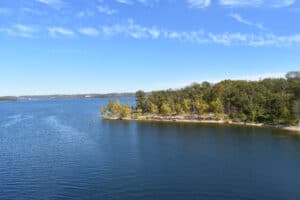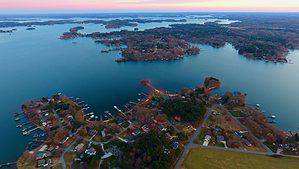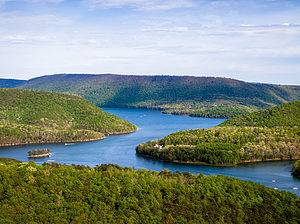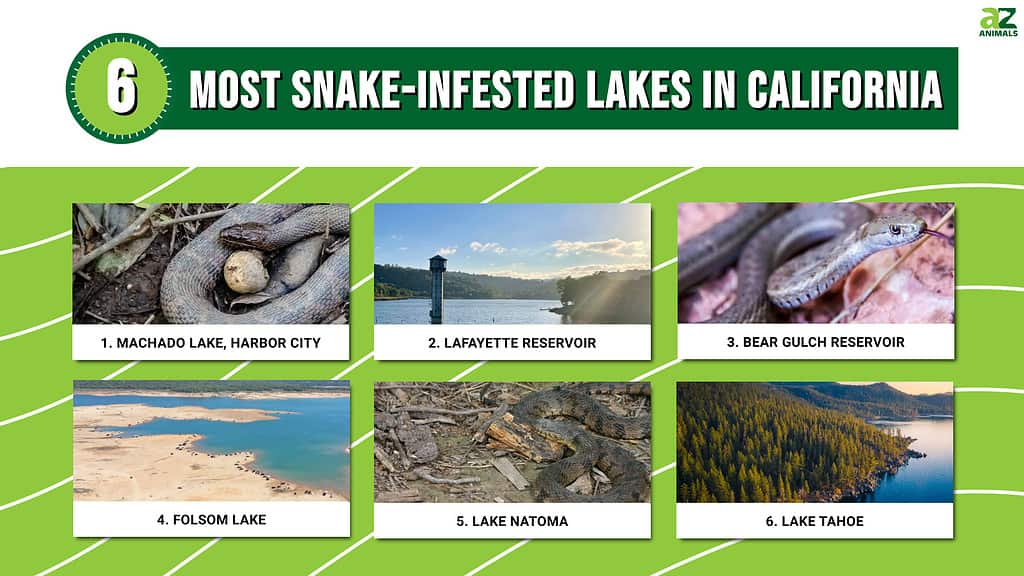
California is one of the most popular and populated states in America. The Golden State is located on the western side of the USA, touching the Pacific Ocean on its coast. The ocean, climate, and diverse landscapes, including forests, deserts, and lakes contribute to the state’s ecological diversity.
Although there are 46 different species of snakes in the state, rattlesnakes are the only venomous ones found. According to World Atlas, there are about 3,000 named lakes and reservoirs in the state, of which one might wonder which are safe for a swim and which are not. This article contains some of the most snake-infested lakes in California.
Water Snakes Found In California Lakes
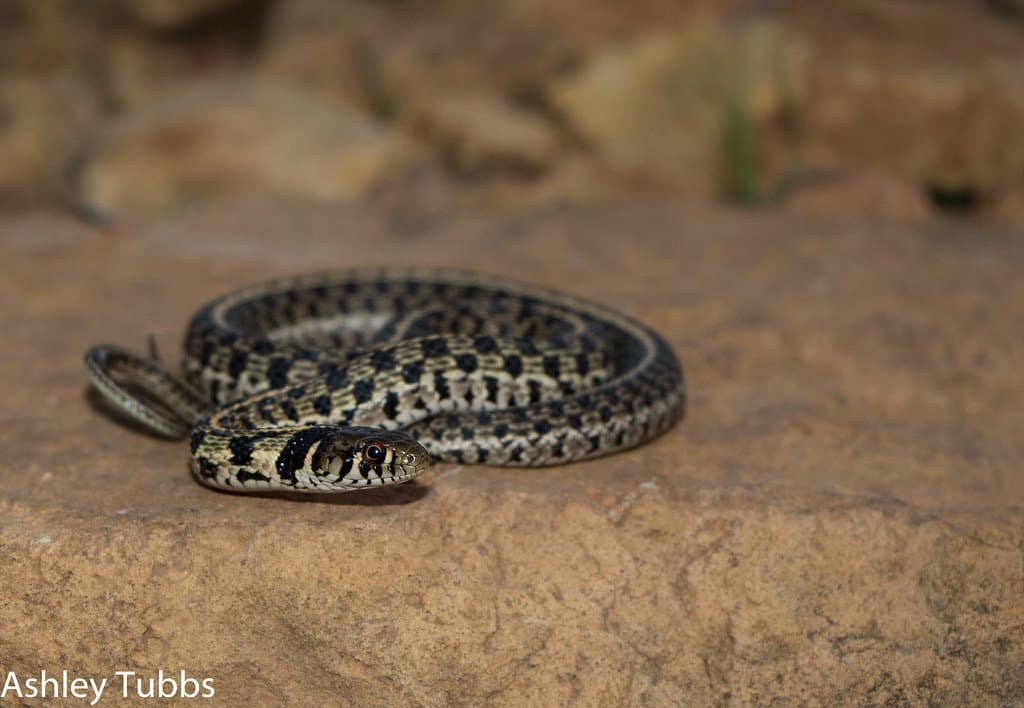
Checkered garter snakes have green ridged scales on their backs with a black and white checkered pattern.
©
California pales in comparison to Texas, the state with the largest number of snake species in America. However, the Golden State has more than its fair share of snakes, with about seven being venomous. California’s seven venomous snakes are rattlesnake species, which spend most of their lives outside water.
None of the water snake species found in the United States is native to California. The water snakes found in California are an invasive species believed to have been introduced to the state from Florida.
Technically, all snakes can swim, but only truly aquatic snake species are sea snakes. All the others in the U.S. are semi-aquatic and spend part of their time on the land. This, however, doesn’t mean that California’s lakes are void of snakes. The state is known to have aquatic garter snake species that are sometimes seen swimming expertly in California’s water bodies. Some other garter snakes found in Californian lakes are the Sierra, western terrestrial, and the checkered garter snake.
Despite this, California’s lakes are free of venomous snakes as there is only one venomous aquatic snake species in the United States. That snake is the cottonmouth, which luckily, is not found in California.
6 Most Snake-Infested Lakes in California
Most sightings of semiaquatic snakes in California have been in Roseville and Sacramento. Here are six of the most snake-infested lakes in California:
1. Machado Lake, Harbor City
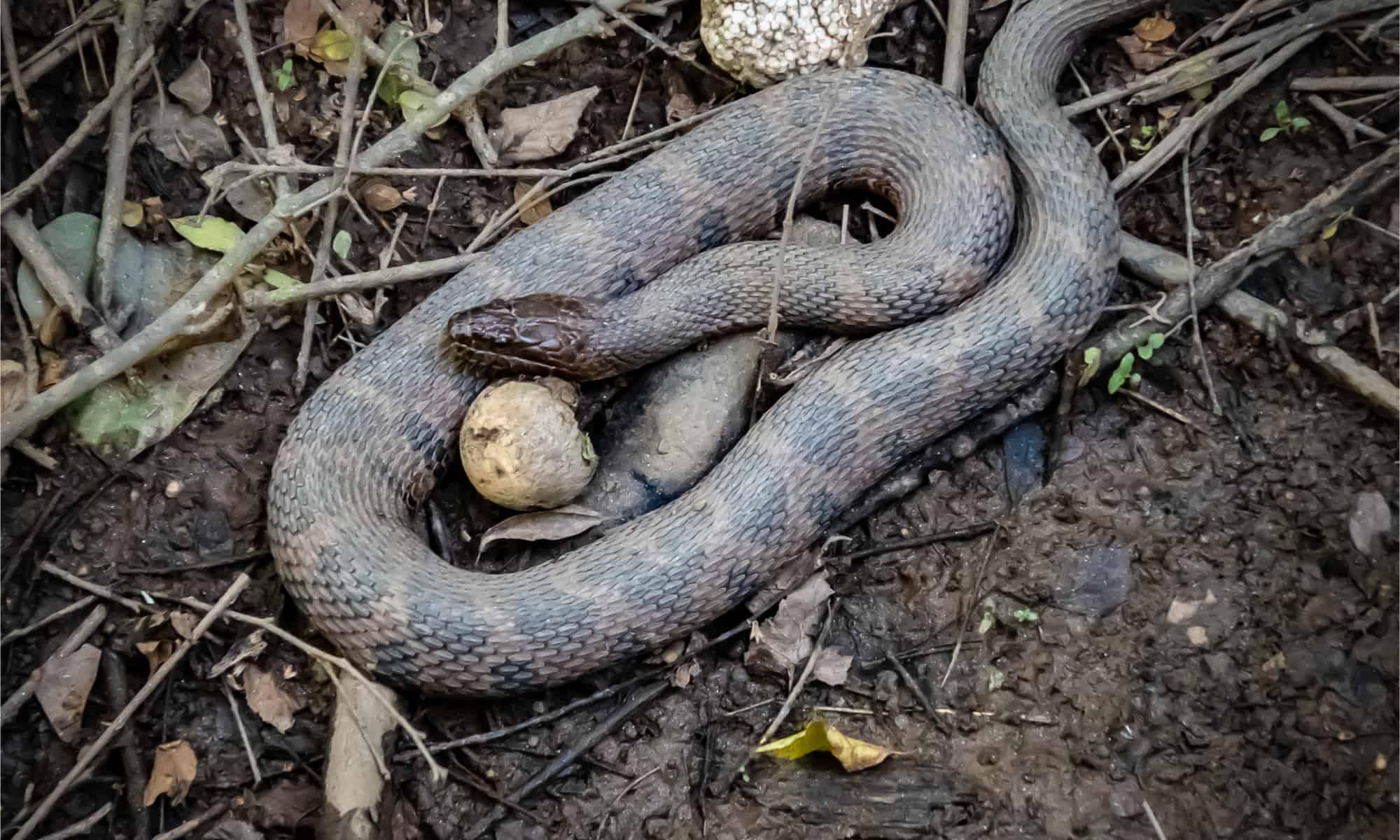
Increased population of water snakes can be found in Machado Lake.
©Deborah Ferrin/Shutterstock.com
Machado Lake is located in Harbor City. According to reports, the lake has been associated with heavy pollution, bacteria, alligators, and black snakes in recent years. The 45-acre lake has been victim to illegal dumping, thus impairing the water quality of the lake. However, this has not reduced the presence of snakes in and around the lake.
According to news reports, southern water snakes can be found in Machado Lake. The increased population of water snakes in the area was believed to be because of pet owners letting their pets go.
2. Lafayette Reservoir
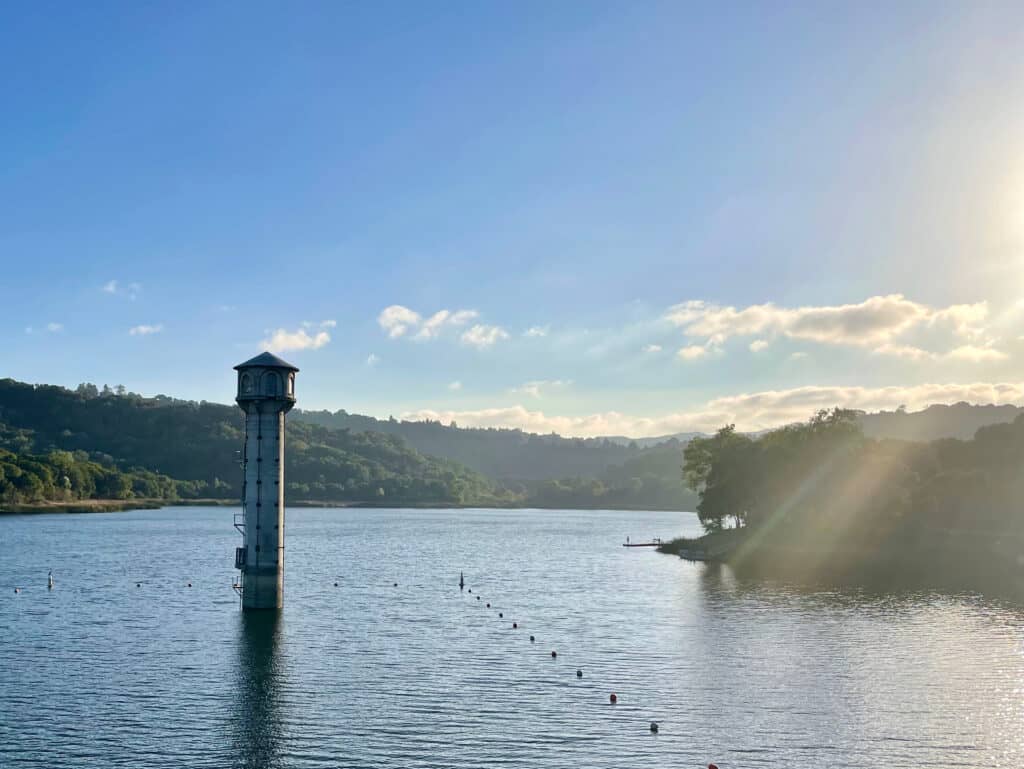
Lafayette Reservoir is a common site for gopher snakes and California King Snakes.
©Poetplyr6/Shutterstock.com
Lafayette Reservoir is a storage reservoir for East Bay Municipal Utility District. The 1.4 billion-US-gallon lake is commonly used for boating and fishing. The reservoir is surrounded by hills and forests, drawing people who love dirt hiking.
The landscapes around the large reservoir have several snake species. According to the Lafayette Reservoir Check List, some common snakes found in and around the reservoir are the gopher snake and the California kingsnake.
3. Bear Gulch Reservoir
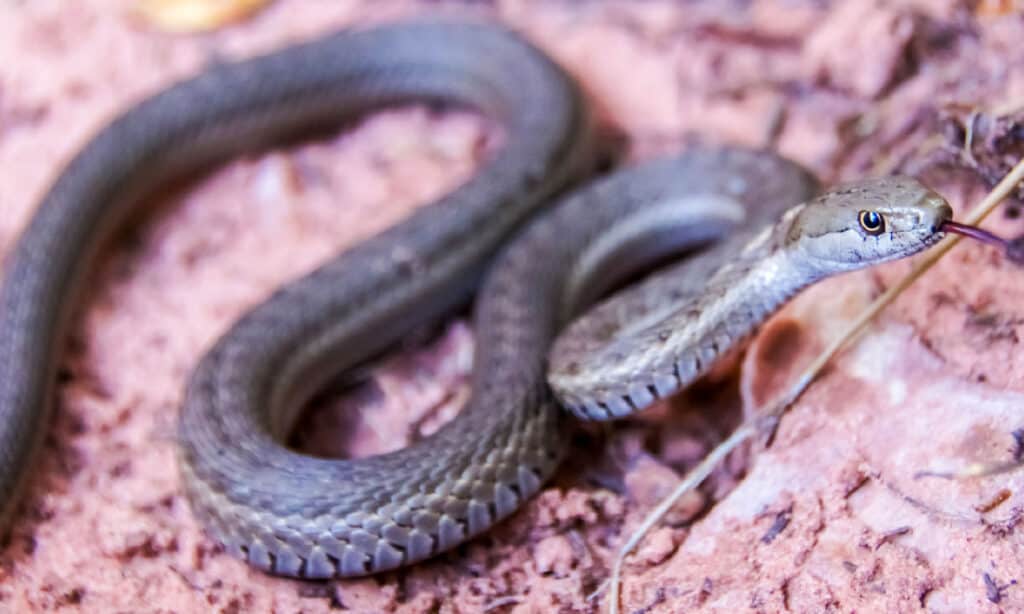
Home to 14 diverse snake species like the common garter snake.
©iStock.com/yhelfman
Bear Gulch Reservoir is located in Woodside, California. According to Menlo Park, this lake, containing over 100 million gallons of water, provides water to over 50,000 people in the Bear Gulch District. The National Park Service states that the area has 14 diverse snake species. Some common snakes in the area are the common garter snake, the gopher snake, and the western rattlesnake.
The area was named after a bear attack incident in 1850. Bear Gulch Reservoir is closed to the public, and swimming is prohibited. This was done to preserve the declining population of animal species in the lake, such as the endangered California red-legged frog.
4. Folsom Lake
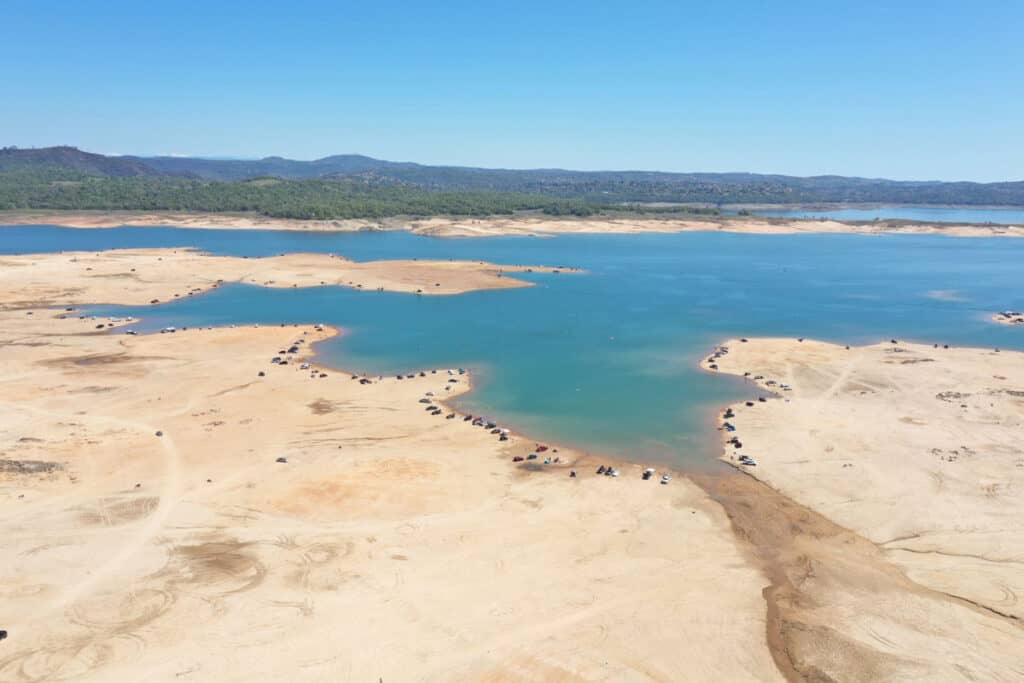
Folsom Lake is widely visited in the summer but accumulates debris over time, making it shallower for snakes to swim across.
©iStock.com/Hunter Souza
Folsom Lake is a reservoir formed by Folsom Dam. It is located on the American River, touching Placer, Sacramento, and El Dorado Counties. People head to the lake and its recreational park, especially in summer, to cool off. The lake is also popular for its rainbow trout and bass. However, semi-aquatic snakes can swim along the lake on warm afternoons at certain times of the year.
According to reports, one factor that affects the population of semiaquatic snakes in Folsom Lake is the accumulation of debris in the lake. The debris reduces the lake’s depth and makes good hiding places for these semiaquatic snakes. There are only a few snakes that burrow their own holes, but none of them is a water snake. Instead, these snakes use holes dug by other animals. Although the Southern water snakes are found within the constructed marsh of Folsom Lake.
5. Lake Natoma

The nonvenomous copper-bellied water snake can be found to inhabit the waters of Lake Natoma.
©Mike Wilhelm/Shutterstock.com
Lake Natoma is a small lake between the Folsom and Nimbus Dams in Sacramento County, CA. Like Folsom Lake, the smaller lake occurs along the American River and has a length of 4 miles. Surrounding the lake are cliffs, plateaus, foothills, and canyons. The lake offers a fantastic location for recreational activities such as kayaking, fishing, and skiing, and is a good habitat for snakes.
According to the California Department of Fish and Wildlife, semiaquatic snakes such as the southern water snake are found in and around Lake Natoma. These snakes reproduce fast and have various diets, including fish and amphibians.
6. Lake Tahoe
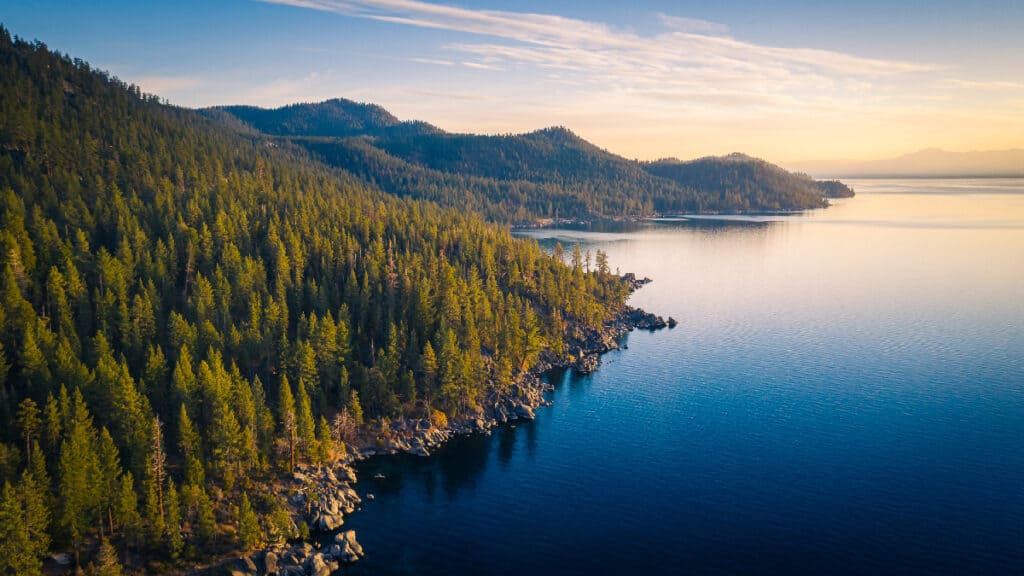
Lake Tahoe is the second-largest lake in California and has an abundance of rattlesnakes.
©iStock.com/heyengel
Lake Tahoe is the second largest and deepest lake in California, spanning a surface area of 191.58 square miles with an average depth of about 1,000 feet. This freshwater lake is famous for its crystal clear water with no sharks or alligators. However, Lake Tahoe is not completely safe, as it ranks as one of the most snake-infested lakes in the United States.
Lake Tahoe has a large area of its banks surrounded by coniferous forests, which are suitable habitats for snakes. According to news reports, Lake Tahoe Basin has had a rise in the presence of rattlesnakes and other snake species in recent years due to climate change. While they are majorly land snakes, these rattlesnakes can swim in search of food, mates, or new habitats. Other snakes that have been sighted include the common water snake.
Honorable Mention: New Melones Lake
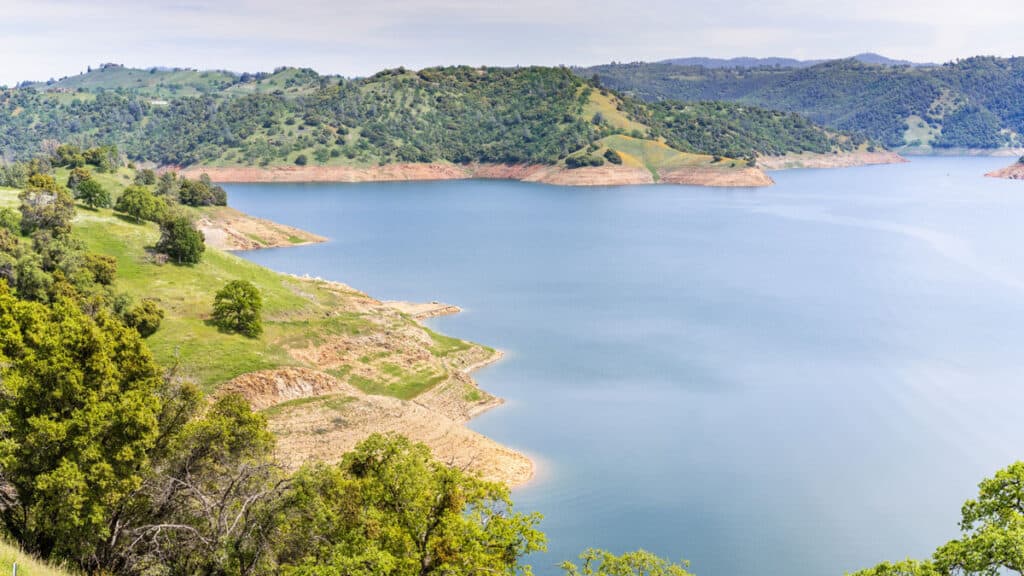
Western Pacific rattlesnakes inhabit areas around New Melones Lake.
©iStock.com/Sundry Photography
There are many lakes in California where there are very few snakes to speak of. While our article covered the main ones that one may consider “snake-infested,” there are other lakes in California with snake populations. One such lake is New Melones Lake, located at an elevation of 1,100 feet in the Sierras. Most of the lakes in and around the lake are non-poisonous, such as the gopher snake, while the venomous western Pacific rattlesnake is the only venomous variety found in the area. This snake’s population fluctuates based on times of drought versus normal rainfall. When rainfall is up, rodent populations increase, thus attracting more snakes to the area. This occurred in 2018 around New Monlones Lake, when groundskeepers had to relocate more rattlesnakes than in previous years. Multiple sitings of western Pacific rattlesnakes around campgrounds where people frequent have prompted wildlife keepers to issue warnings about them.
Summary Of The Most Snake-Infested Lakes In California
| # | Lakes | Snakes Found |
|---|---|---|
| 1 | Machado Lake, Harbor City | Southern water snakes |
| 2 | Lafayette Reservoir | Gopher snake and the California king snake |
| 3 | Bear Gulch Reservoir | Common garter snake, the gopher snake, and the western rattlesnake |
| 4 | Folsom Lake | Southern water snake |
| 5 | Lake Natoma | Southern water snake |
| 6 | Lake Tahoe | Rattlesnakes, common water snakes |
Other Animals Found Near Lakes In California
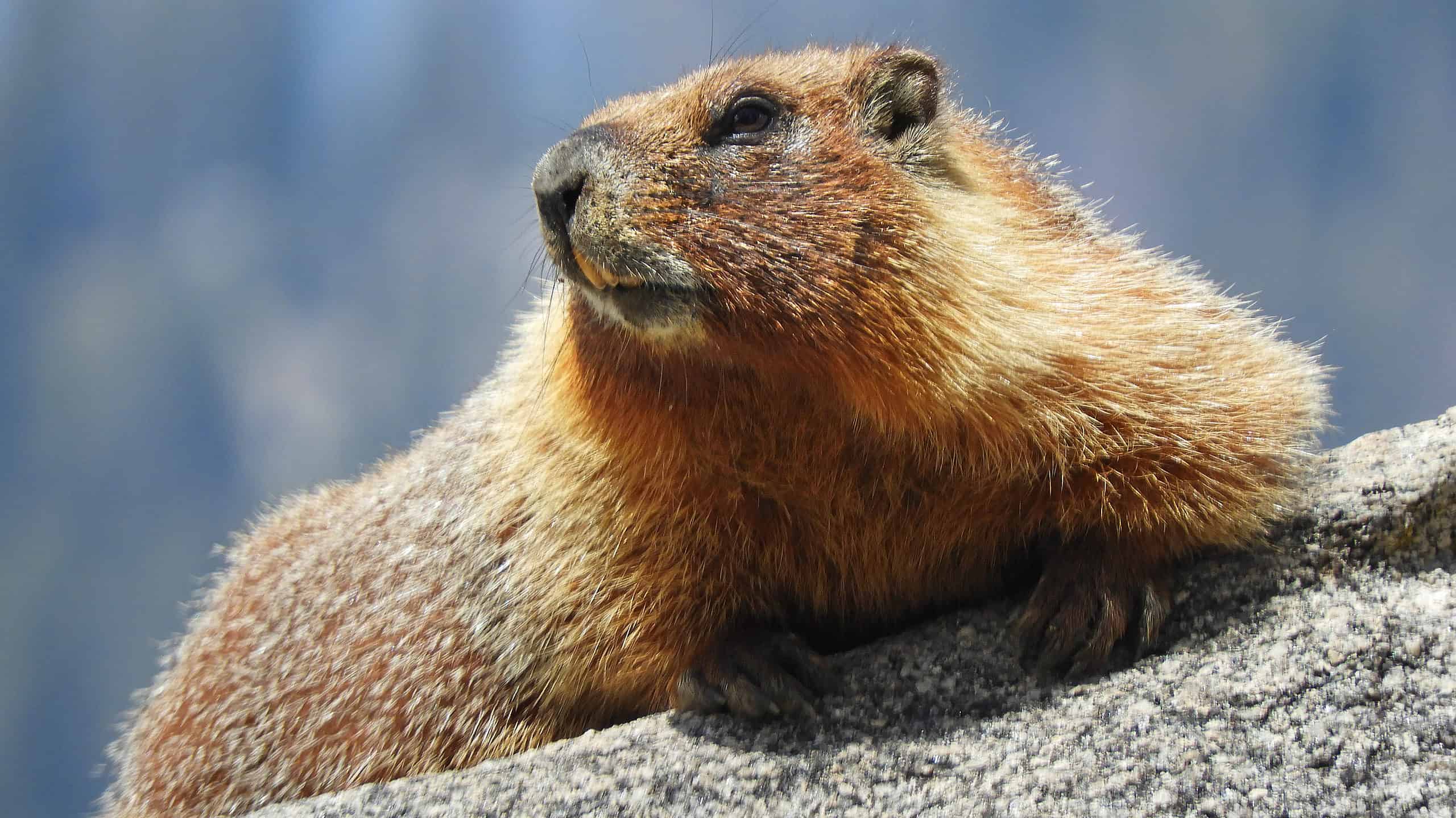
Yellow-bellied marmot, California.
©AustralianCamera/Shutterstock.com
California is home to numerous animals and many of them can be found near Lake Tahoe. Not only are there reptiles, but numerous mammals, like the yellow-bellied marmot and the porcupine. The yellow-bellied marmot, also known as the rock chuck, is a ground squirrel with brown fur, a yellow belly, and a whitish spot between its eyes. This rodent has a high-pitched chirp that it uses to warn members of its group of potential threats and spends most of the year in hibernation.
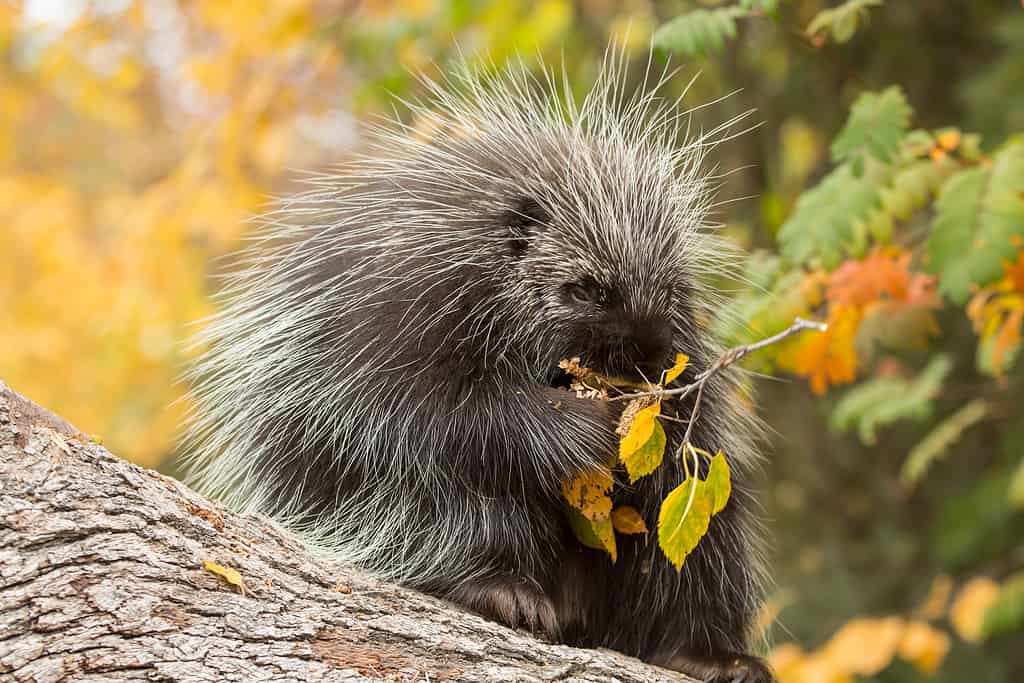
©Warren Metcalf/Shutterstock.com
The North America Porcupine is the second-largest rodent in North America, after the beaver, weighing in at about 20 pounds and reaching lengths of between 2 to 3 feet. These mammals are covered in coats of about 30,000 sharp quills to protect them against predators and these quills are not shot out but rather detach easily when encountered by another animal. Porcupines spend most of their time on the ground although they are good swimmers and climbers, spending a lot of time in trees looking for food.
The photo featured at the top of this post is © iStock.com/CelsoDiniz
Sources
- National Park Service, Available here: https://www.nps.gov/pinn/learn/nature/reptiles.htm
- Forest Service, Available here: https://www.fs.usda.gov/detail/ltbmu/learning/?cid=stelprdb5109570
- Los Angeles Times, Available here: http://www.latimes.com/local/california/la-me-watersnakes-lake-machado-20160603-snap-story.html
Thank you for reading! Have some feedback for us? Contact the AZ Animals editorial team.



